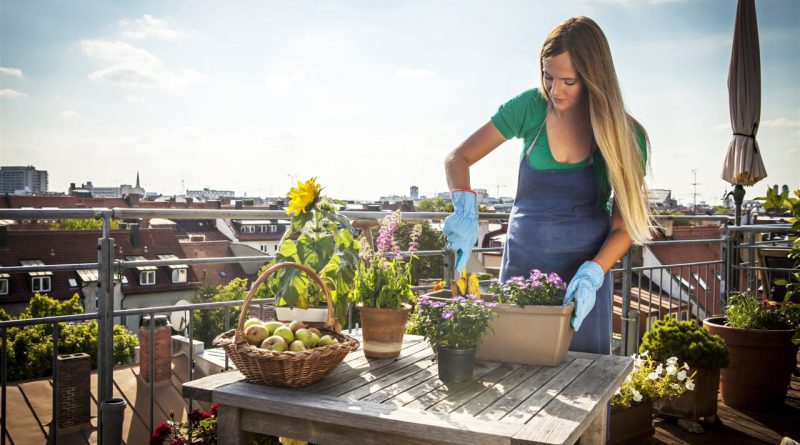Dig into gardening trends: Tips to get started
Just like fashion, trends in gardening come and go … and sometimes come back again. Some shifts in gardening were inspired by necessity, like the “victory gardens” of WWII for growing food during years of rationing. Others reflected societal changes, like the green lawns of the 1950s and 1960s, when families spent more time playing and entertaining in their yards than ever before. If you look further into the past, to the 1920s, you see a trend that’s on the rise again — a yearning for going back to nature, celebrating a lush, green and bird-friendly environment. Those gardens overflowed with all sorts of greenery, fishponds, birdbaths and bird feeders.
Today’s interest in sustainable gardens offering a home for pollinators is not too different from the desire for bird watching and natural gardening of 100 years ago.
A new survey by the National Garden Bureau (NGB), which is celebrating its 100th anniversary, found fascinating trends among today’s gardeners, both expert and novice, which may inspire ideas for your own gardens.
Grow to eat
More than half (57%) of those age 35 and under said they’re using their green space to grow their own food. That interest was echoed by respondents over 35, with 65% of them saying they planned to turn at least part of their future gardens into more of a food source. Many expressed interest in growing their own herbs in their kitchens, with over 65% of those 35 and under sharing plans to grow herbs indoors in the future.
New to growing veggies, fruits or herbs? Consider starting seeds in your kitchen or creating a small raised garden bed outdoors. Research what grows best in your region and the most ideal time for planting. Start small, with just one or two types of plants, so you don’t feel overwhelmed. And grow something you know you’ll love to eat!
Mixed use gardens
Gardens past and present have served multiple purposes, and gardening with a variety of plants allows you to enjoy your space and take in the outdoors to your liking. Over 67% of respondents 35 and under shared that while they want some green lawn, they also want the rest of their yard to be planted with trees, shrubs, flowers, fruits, herbs and vegetables.
What does that mean for gardens of the future? They’ll likely offer more variety, from the ornamental to the edible.
And over 60% of gardeners of all ages want to grow pollinator-friendly plants and flowers.
Look at your own yard and decide how much of it you want to dedicate to your garden and containers, or perhaps what other types of plants you could grow instead. Consider consulting a professional in your area as a resource for advice on a strategy for your space.
Victory Garden 2.0
When the Victory Garden Manual was first written in 1943, reasons to grow your own vegetables were obvious; it was wartime and food was scarce. Statistics say that in 1943, nearly 40% of all fruits and vegetables grown in the U.S. were grown in home and community victory gardens.
As NGB celebrates its 100th anniversary, it seems timely to reintroduce the concept of victory gardening with quick and easy steps to plan and grow your own vegetable garden. Before digging in, it may be helpful to create a list of vegetables that your family enjoys. From there, plan your garden space and determine if you’ll be planting in the ground, raised beds, containers or a combination. Don’t forget to add pollinator-friendly flowers to ensure vegetables are properly pollinated, and you’ll have a great start on the modern victory garden.
Gardeners of the future
It may seem as though younger people are somewhat less likely to be active gardeners, as 11% of the survey respondents under 35 said they’ve never gotten their hands dirty — as compared with only 4% of those over the age of 35. Commonly, lack of time and space are their two biggest hurdles to gardening. But many younger gardener wannabes hope to graduate from growing houseplants and succulents indoors to becoming gardeners in the future: 53% said they hoped to grow houseplants, with 58% planning to graduate to growing flowers, and over 65% planning to grow fruits and vegetables in the future.
If you’re thinking of taking the gardening plunge for the first time, or expanding your gardening efforts, talk to family and neighbors who have successful gardens for their advice.
Growing inspiration
The internet can be a great source of inspiration for future gardeners. While gardeners over 35 look to magazines, books and garden retailers for ideas, those under 35 largely browse Pinterest, Instagram and YouTube for information and tips about developing their green thumbs. However, both groups talk to friends and family for ideas and inspiration about what, and how, to grow.
For more information, tips, blogs and lots of inspiring gardening ideas, visit ngb.org.
BPT









